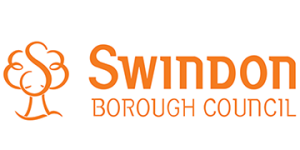Using the Applied Trauma Responsive Classroom observation schedule

The model is intended for use in a sequential manner, starting at the bottom and building resilience by considering our approach with each layer in turn.
We want to use the model to consider how we are meeting those needs of the children and young people we are supporting. You can access the model here and read the companion blog about the journey towards creating this model. The layers are as follows:
1. Safety
Safety is the foundation layer; this is because we understand that a child must first feel safe to move to building trusting relationships and connecting with others. If a child’s previous trauma or adversity has impacted their sense of safety, it is vital we start our interventions here.
2. Co-attunement and connection
These come after a child feels safe enough to begin to build trusting relationships within their education setting. This is important because attachment research demonstrates that children learn to manage their emotions through processes of attunement and connection with reliable caregivers. People impacted by trauma and adversity are more likely to struggle with self-regulation and require a focus on co-regulation to help overcome this.
3. Affiliation and belonging
These can emerge once connections have been established. Children whose needs for belonging are met within their education settings tend to be happier, more confident and a perform better academically (Riley, Coates & Allen, 2020)
4. Identity and a sense of self
This can develop most effectively once a child feels they belong. Children who have experienced adversity and trauma often require additional support to explore their self-hood and consider their identity within the safety, security and connections that have been built.
5. Autonomy
Autonomy or a sense of control is built upon our selfhood. Once a child has a sense of who they are and what they want, we can support them to overcome helplessness and offer opportunities for influence.
6. Resilience and coping skills
Emotional literacy and social skills are best addressed once the previous layers have been considered. At this point learners should be more able to reflect and integrate new learning for skill development.
7. Future planning
This is the final layer, as this is where we would hope children would have the confidence and skills to move towards successful independence.
The ATRCM observation and planning schedule
The observation and planning schedule offers a framework to consider appropriate intervention and practice across these 7 layers. Through observations and conversations with those around a child or young person, you can consider the questions in the ‘is the child?’ column. I’d advise making notes in response to these questions and any further relevant information in the observations space provided below.
To consider the environment, approach and how to apply appropriate sequenced support, the ‘have I?’ column offers some examples of positive practice across the areas of need. It is advisable to consider these, and where this is not current practice, to add this to the planning space provided below. The schedule can serve as a working document, with observations and planning reviewed periodically. You can access the planning and observation schedule here.
I am very interested to hear from educational professionals who would like to give feedback in response to the ATCRM, whether that be to discuss the framework or to consider an evaluation of its use. Please do email me.





This is fantastic, I will definitely be using this with schools, thank you